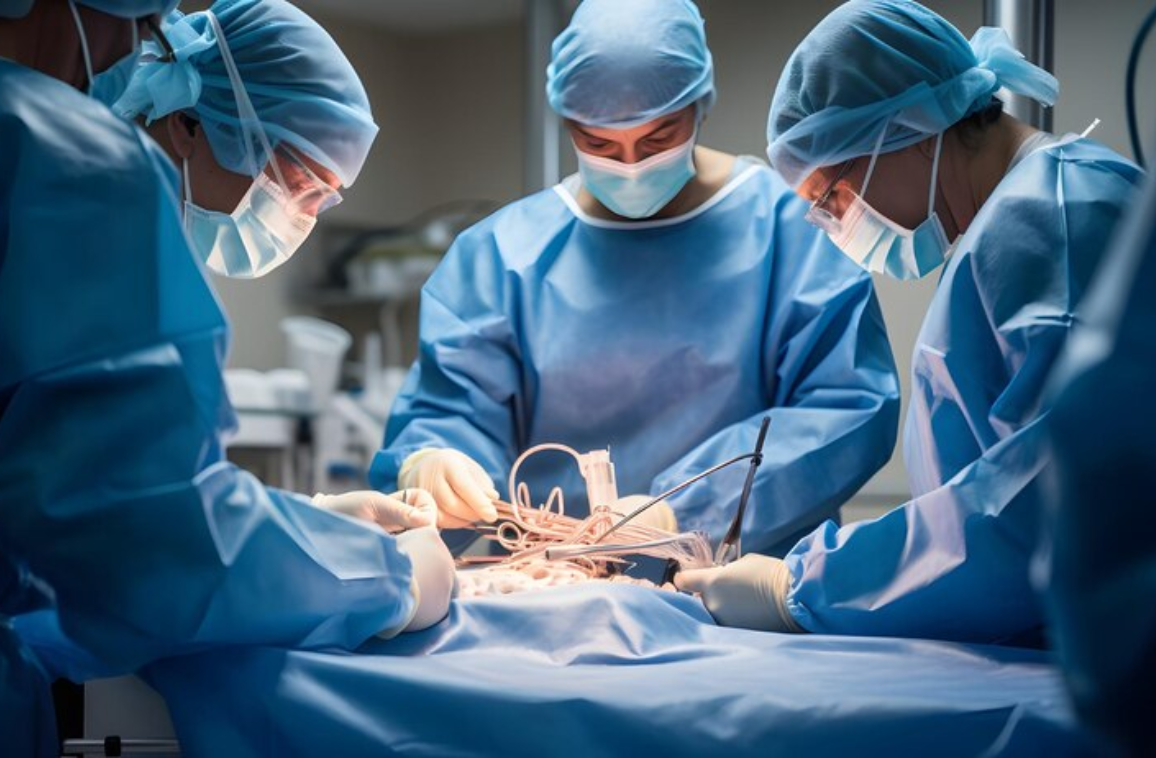
Team V9
February 4, 2024
Cholecystectomy (removal of the gallbladder) is a common surgical procedure. Gallstones are the most common reason for this surgery, but it can be done for a variety of diseases of the gallbladder.
There are two main types of cholecystectomy surgery: a minimally invasive laparoscopic procedure and an open procedure.
The gallbladder is a pear-shaped, hollow organ located just under the liver on the right side of one’s abdomen. It serves as a reservoir to store and secrete bile into the small intestine. The liver makes the bile (a thick yellowish-green liquid), and then it travels via a system of tube-like structures known as bile ducts to be either stored in the gallbladder (for later use) or even secreted into the small intestine to help break down ingested fats.
Several forms of gallbladder disease can be treated by cholecystectomy.
An abnormal condition referred to as cholelithiasis (or gallstones) is one of the most common reasons for having a cholecystectomy. Substances in the bile can become solid, forming hard stones of various sizes (from tiny grain-like stones to even stones the size of golf balls). These stones do result from various factors, like too much cholesterol or not enough bile salts in the bile.
As bile moves via the biliary system (the organs and ducts that are rather involved in the excretion and storage of bile), it is common for the small stones to become stuck in the bile duct that connects the gallbladder to the small intestine. These can cause severe pain and other complications, like pancreatitis (inflammation of the pancreas). The treatment for gallstones is in the form of the removal of the gallbladder.
Other common reasons for cholecystectomy include:
Two types of procedures are performed to remove the gallbladder. The first happens to be an open technique. This involves a large incision and a longer wound healing time. The open technique requires a two- to six-day postoperative (after-surgery) hospital stay.
A cholecystectomy can also involve an intraoperative cholangiogram (IOC), which is a live, real-time video X-ray of one’s ducts taken during surgery. An IOC is performed to check for gallstones and ensure that the surgeon can properly view the common bile duct.

The second type of surgery is a minimally invasive surgery performed using a laparoscopic technique. Laparoscopic surgery involves a tool known as a laparoscope with a small camera; the procedure is conducted with the aid of very small tools and also a camera for viewing for the surgeon to get a very clear view of the surgical site.
The laparoscope can be used for therapeutic procedures such as the removal of the gallbladder.
Normal activity can be resumed in about a week after one’s laparoscopic surgery, but consult the surgeon or other healthcare provider about when to resume and the type of heavy lifting or strenuous physical workout after surgery that can be carried out.
A cholecystectomy happens to be a common surgery. It is a safe operation and has a small risk of complications.









WhatsApp us